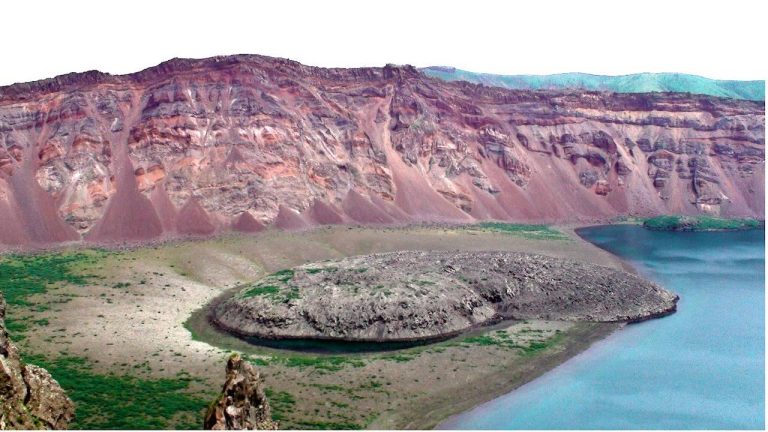
Nearly 200 years have passed since a global cold snap caused widespread crop failures and devastating famine. [emphasis, links added]
Now, a new study from scientists at the University of St. Andrews has finally figured out why.
Experts have revealed that the Zavaritsky volcano, located on the remote and uninhabited Russian island of Simushir (part of the Kuril Islands), erupted in 1831.
This dramatic event injected volcanic ash into the atmosphere, blocking enough sunlight to cause a brief global cooling.
The resulting weather changes include reduced rainfall, lower crop yields and severe famine from Africa to India to Japan.
Dr Will Hutchison, lead author of the study, told MailOnline: “While scientists have long known that a truly massive eruption occurred in 1831, the source of the eruption remained a mystery.

“Our chemical fingerprint of the volcanic ash shows the origin of this mysterious climate-changing eruption is this remote volcanic island in the Kuril Islands.”
Zavaritsky volcano has not erupted since 1957, but it is still considered an active volcano, meaning it has the potential to erupt again in the future.
In the summer of 1831, a massive volcanic eruption spewed sulfurous gases into the atmosphere, reflecting sunlight and causing global temperatures to drop about 1.8°F (1°C).
The team said this cold weather resulted in “a significant cooling of the northern hemisphere's climate,” leading to crop failures and famine.
Historical observations mention the appearance of blue, purple and green colors of the sun at various locations in the Northern Hemisphere in August 1831.
This phenomenon is caused by the scattering and absorption of solar radiation in dense aerosol plumes caused by volcanic eruptions.
Even the German composer Felix Mendelssohn wrote about the harsh conditions while crossing the Alps in the summer of 1831.
Mendelssohn said: “The weather is desolate. It rained all night and all morning. It's as cold as winter. Thick snow has accumulated on the nearest mountain…”

Although scientists know this was a major event causing climate change and social unrest, the identity of the volcano responsible for the event has so far remained unknown and sparked intense debate.
For the study, Dr. Hutchison and his team analyzed ice core records from the Greenland polar ice sheet dating back to 1831.
These icicles are a valuable record of the climate conditions at the time of their formation, including local temperatures, atmospheric chemistry, and, most importantly, volcanic activity. …
“We were able to identify Zavaritsky as the source because The magma it produces has a unique chemical composition that differs from that of neighboring volcanoes.Dr Hutcheson told the Daily Mail.
The study, published in the journal Proceedings of the National Academy of Sciences, finally solves a nearly 200-year-old mystery. …
Although distant, the 1831 eruption had a significant impact on global climate and had serious consequences for humanity.
However, predicting volcanic eruptions is difficult even with historical eruption data.
Dr Hutcheson added: “The island is uninhabited and no one is monitoring the volcano, so our work shows how difficult it will be for scientists to detect when and where the next big climate eruption will occur.”
Image via University of St Andrews
Read the full article in the Daily Mail
